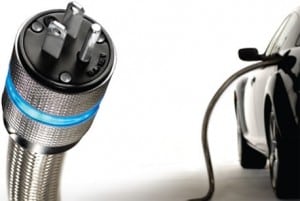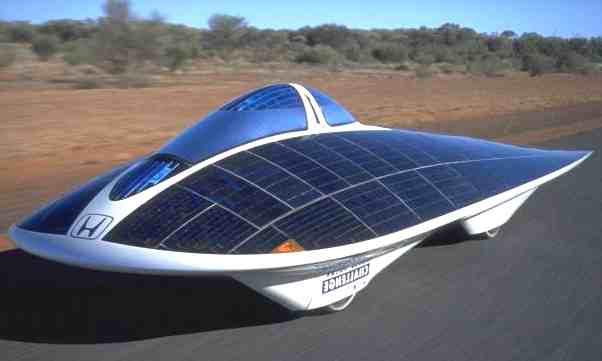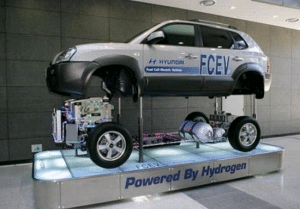If the latest news of ‘coal rollers’ is anything to go by, green technology is finally changing the car manufacturing market. Fuel efficiency , and a movement away from expensive nonrenewable fuel has led car makers to look into other options. Whilst some may disagree, there’s no denying that eco-friendly technologies are a viable and forward thinking option for most car manufacturers. What sort of groundbreaking technology should we be expecting in the upcoming years? Unlike the doomed electric cars of the ‘80s, or the nuclear Delorean in Back to the Future, there looks to be three big developments to the way manufacturers produce vehicles:
Plug-ins, Solar and Hydrogen
 Whilst hybrids have been on the market for years, the growing market is leading to more and more developments in the field of green technology. The numbers are in, and whilst SUVs remain a popular staple of the American roadscape, the hybrid is fast becoming a symbol of American progress and future, as shown in Cadillac’s super bowl commercial. Here we’ll be looking at some of the big changes in automotive manufacturing and what to expect on the highways of the future.
Whilst hybrids have been on the market for years, the growing market is leading to more and more developments in the field of green technology. The numbers are in, and whilst SUVs remain a popular staple of the American roadscape, the hybrid is fast becoming a symbol of American progress and future, as shown in Cadillac’s super bowl commercial. Here we’ll be looking at some of the big changes in automotive manufacturing and what to expect on the highways of the future.
Plug-ins
The recent growth of Hybrids has been rapid, so much so that now most competitive car companies have at least one hybrid model in their range. Tesla motors go from strength to strength making it clear that the most popular green tech of choice at the moment remains the hybrid. Chevy’s Volt is now competing with the two leaders of the group Toyota and Ford showing there is ample room for competition from all companies. No longer are they awkward liberal smug wagons, but a sign of sophistication to the world. Working on a mix of power from the car battery and fuel, it still has a reliance on gasoline/diesel but greatly reduces the automotive’s carbon footprint.
What are the latest developments for hybrid?
The short answer? Plug in hybrids. Rather than just using a dynamo from the engine to charge the battery, car owners now plug their cars into the electrical mains system, leaving it to charge overnight. This reduces a reliance on the fuel, making the car more reliant on battery charge instead. Whilst this helps the buyer save money on fuel, it might not be as green as we would think. The increased use of mains electricity means that power plants, which also use nonrenewable energy, would increase in order to satisfy the need to power such eco-friendly vehicles. With this in mind, car manufacturers are looking towards other ways to give some juice to the hybrid batteries. 
Solar
Solar has been a fantasy for some time, with many cars already boasting the use of it such as on the Toyota Prius and Ford’s C-Max. The issue has always been getting the most efficient use out of it as possible, and the answer looks to be with households themselves. Recently, designers have been converting car shade space to hold solar panels, leaving your car to charge whilst going shopping. Combined with effort to convert garage roofs to solar panel collectors, this certainly shows signs of future development. Leaving your car to charge up by plugging in, it seeks to take up the challenge of the hybrids reliance on power station energy. Solar is nowhere near a point where we can hope to replace fuel power with it – currently, Ford’s most recent concept car would take at least a week of constant charging in the sun to fully energize the battery. Even with 16 square feet of solar panels, on top a daily juice up, it’s still an environmental pipe dream. What appears to be the next step in solar is office and residential building cooperation, setting up canopies to increase the solar power. Expect to see a lot more attempts to move away from ‘the grid’, especially with the tempting idea of having a car that would charge itself even whilst being driven.
Hydrogen
 Hydrogen has, like solar, been a dream of green automotive technologists, and often the reality of such a dream has been questioned. The cost of producing such a fuel cell – one that converts hydrogen into power and emitting only water as a waste product, is high, as is setting up the infrastructure to support it. Every 300 miles the fuel cell requires topping off, which is a problem considering how few places in the US are prepared for this. Have you seen any hydrogen prepped stations yet? Yet this is not stopping car makers from developing and preparing to release these incredibly green cars to the world. Toyota, trail blazers on the hybrid highway, are boasting the release of a fuel cell car by 2015 with California planning to accommodate these eco-tech chariots. By 2016, the California Air Resources Board plans to raise the number of stations in the state to 70, thrashing the existing 10 nationwide. As has been seen above, there has been a decided movement by manufacturers to create energy efficient and environmentally friendly cars. Alongside high performance concept sport cars now sit the green future of automobiles. The pioneering hybrid of fuel and batteries opening the minds of a buying public that environmentally friendly cars aren’t synonymous with a cheap finish but can compete with the latest luxury fuel guzzlers.
Hydrogen has, like solar, been a dream of green automotive technologists, and often the reality of such a dream has been questioned. The cost of producing such a fuel cell – one that converts hydrogen into power and emitting only water as a waste product, is high, as is setting up the infrastructure to support it. Every 300 miles the fuel cell requires topping off, which is a problem considering how few places in the US are prepared for this. Have you seen any hydrogen prepped stations yet? Yet this is not stopping car makers from developing and preparing to release these incredibly green cars to the world. Toyota, trail blazers on the hybrid highway, are boasting the release of a fuel cell car by 2015 with California planning to accommodate these eco-tech chariots. By 2016, the California Air Resources Board plans to raise the number of stations in the state to 70, thrashing the existing 10 nationwide. As has been seen above, there has been a decided movement by manufacturers to create energy efficient and environmentally friendly cars. Alongside high performance concept sport cars now sit the green future of automobiles. The pioneering hybrid of fuel and batteries opening the minds of a buying public that environmentally friendly cars aren’t synonymous with a cheap finish but can compete with the latest luxury fuel guzzlers.
Summarizing
These all give promises as a move from the reliance on grid energy and further steps away from a use of coal, gas and fossil fuels to power our transport. Lastly hydrogen, with its future promises of only water as a waste product are gaining more and more momentum. This technology is still not cheap, the aforementioned Toyota hydrogen fuel cell car costing just under $100,000 still makes it a toy for the wealthier tree huggers, but with hopes of reducing it to the more affordable price bracket of $30,000 – $50,000 we can hope to increase the publics movements to green. One thing is for sure – the car industry is going green, be it for environmental reasons or to match the buying public’s wants. This guest article was written by Jennifer Smith, on behalf of Stratstone,the largest automotive retailer in the UK.







